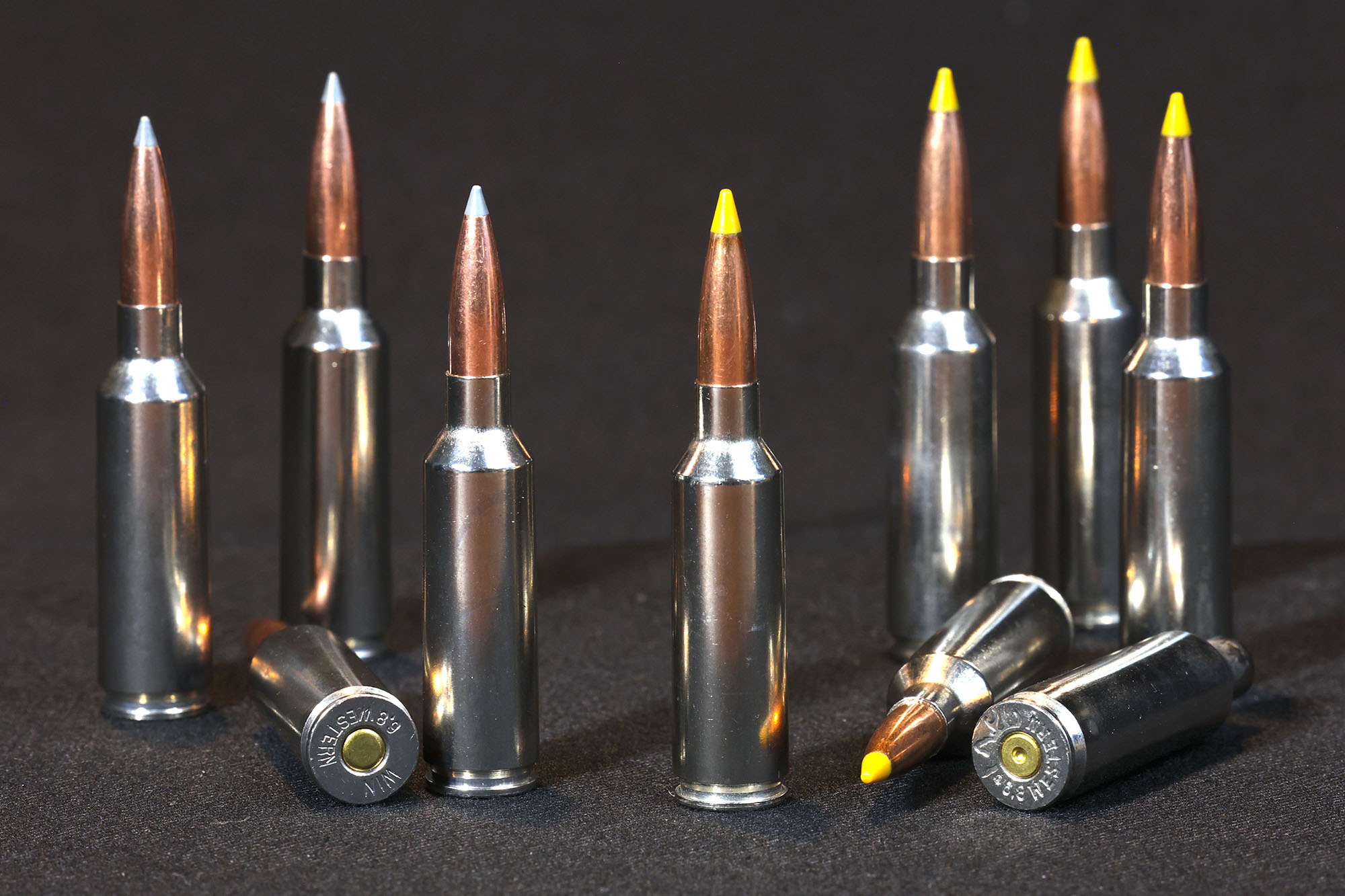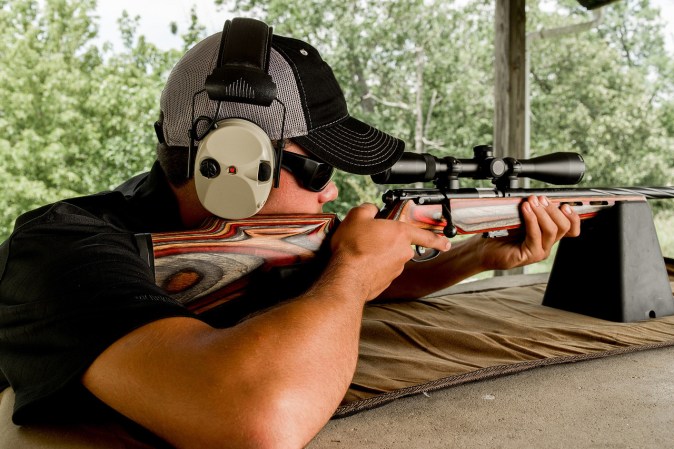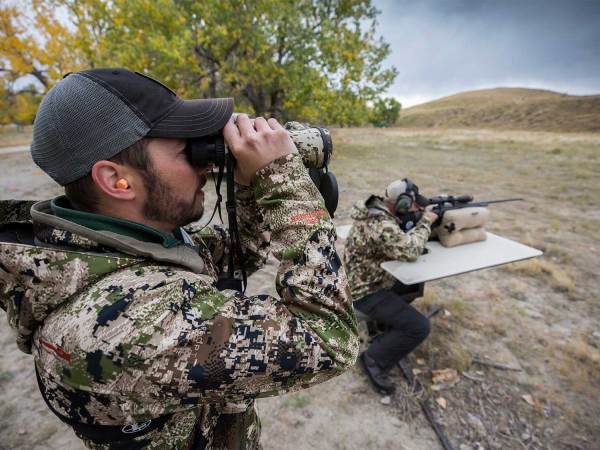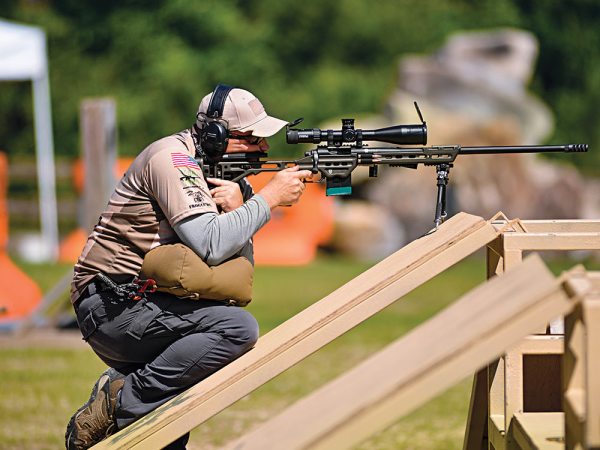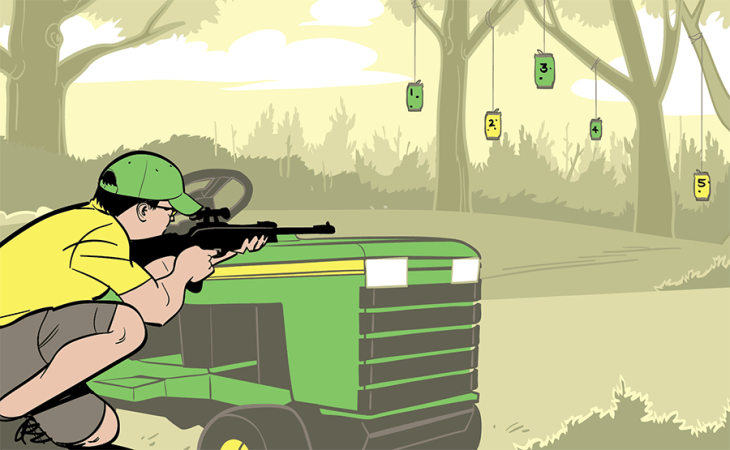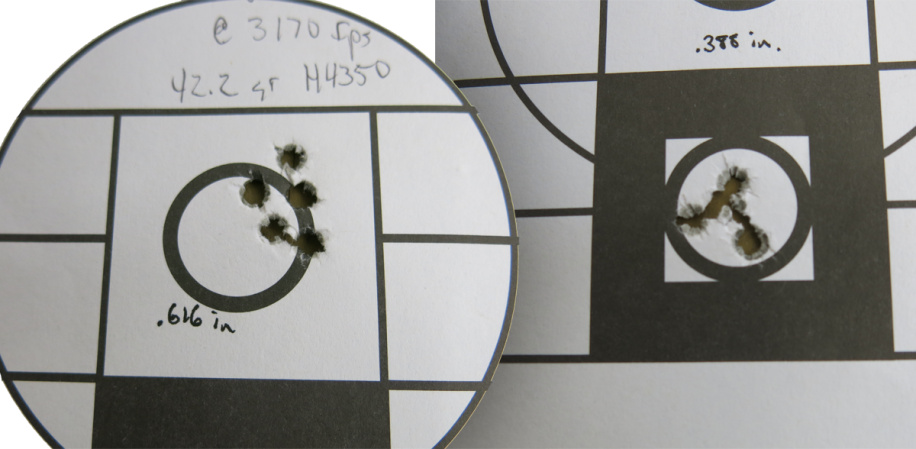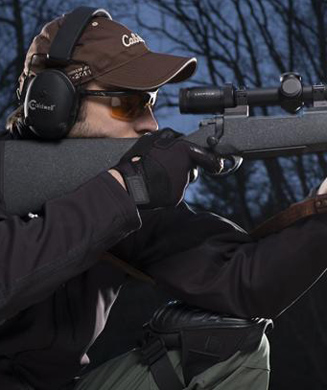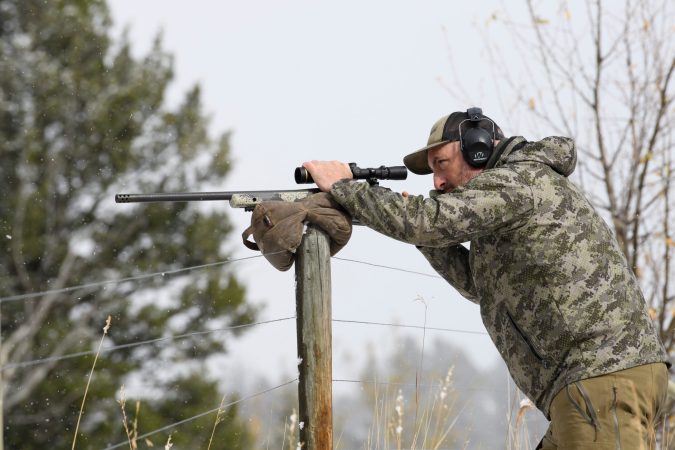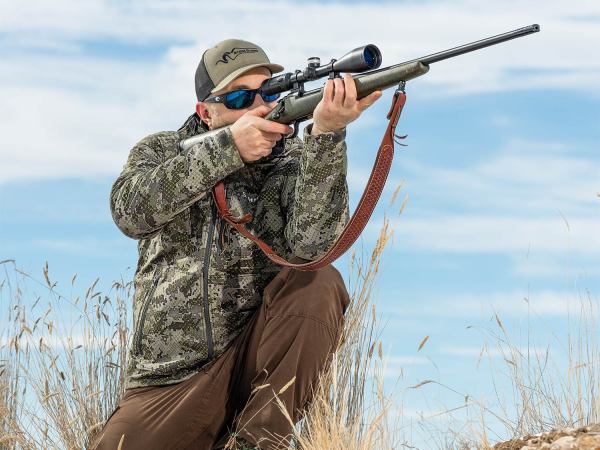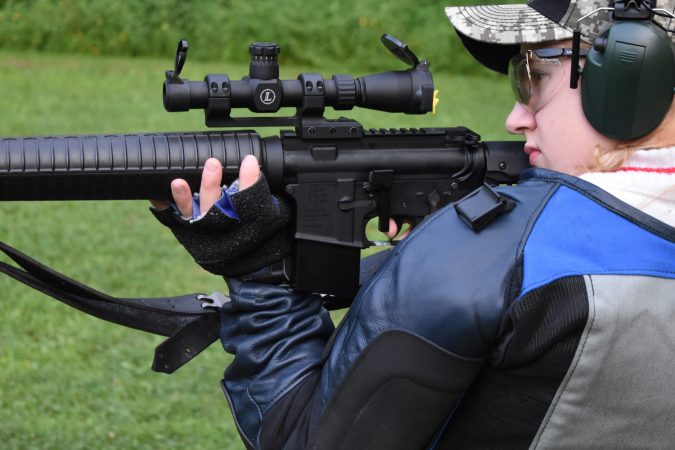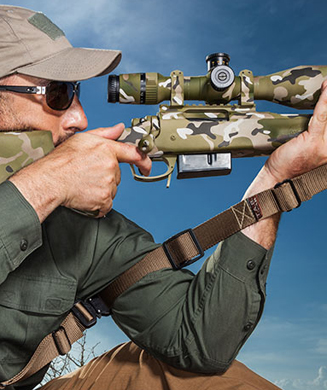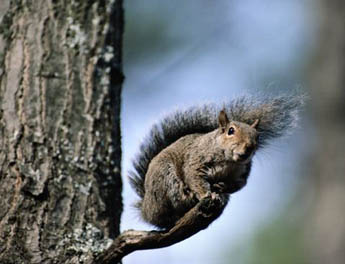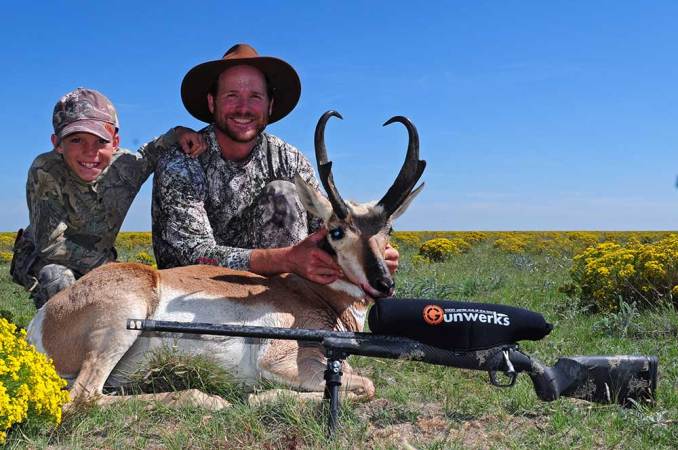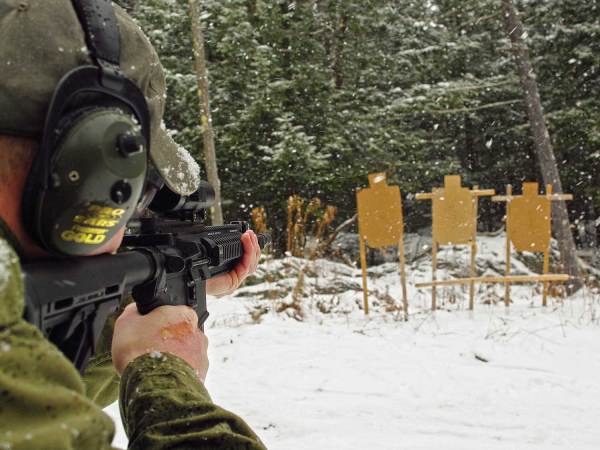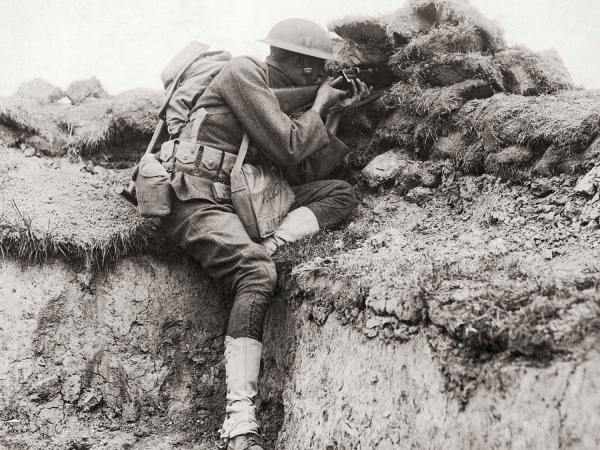We may earn revenue from the products available on this page and participate in affiliate programs. Learn More ›
If you’re going to invest time and money making a hunt out West, spend even more time and money training to be successful during the hunt. Trust me, you won’t be happy if you get out here and discover you’re too wimpy to hike the miles, climb the mountains, and maintain a cozy camp. And you’ll berate yourself for years if you fail to make a good shot when it matters most.
I know. I know. You can’t practice because ammo is hard to find. I have a solution.
If you’ve been reading this series, you’ll understand the importance of choosing the best cartridge, bullet, rifle, and scope for your brand of hunting. Now you must make it as familiar as your right arm. And that means practice. But it doesn’t have to mean range time and burning up expensive ammo. You can do most of your rifle handling/ training at home.
Dry-Fire Practice
Start by making certain your rifle is empty, really empty, and fully empty. Ideally lock all ammo away. And each time you pick up that rifle, triple check that its unloaded. Nothing in magazine, nothing in chamber (look in AND verify by poking your finger in.) Run the bolt several times. Remove bolt and peer down barrel.
With the gun perfectly safe, begin dry-fire training with visualization. Imagine the scene. You peek over a ridge, spot the bull or buck of your dreams, ready your rifle, choose a good shooting position, and launch a perfect shot. This is the same pre-visualization stuff pro athletes do.
Carry your rifle over your shoulder with your sling as if you were afield. Practice smoothly moving your rifle into a shooting position. From standing, pick a target like a door knob or fly on the wall and get it in your scope as quickly as possible. Steady. Squeeze. Click. Try this from a variety of supported shooting positions as well.
Where was the reticle when the trigger broke? You should have seen that. The key to this exercise is keeping your eyes open and your attention focused on the target/sight picture. This is a critical maneuver that too many hunters never learn. They close their eyes at the shot, then look over the scope to see what the animal has done. This is not good. Your best, magnified view is through the scope. Stay in it! The goal is to see the bullet impact the animal through the scope. If the recoil takes the animal out of view, get back on target and watch the critter through the scope.
When hunting you want to see your bullet fly into the target. Even if you can’t, by trying you keep your eyes open and will know where the crosshair was when the shot broke. Dry firing trains this. All modern bolt-action rifles can be dry fired without damage. If you’re worried, about it, just use a snap cap. Read about more dry-fire drills here.
Practice Sight Acquisition
Now, if you’re slow to find your target through a scope, train for rapid sight acquisition. Start with scope set on a low power with a wide field of view. Lock your eyes on the target and keep your focus on it while you raise your rifle to your cheek. The target should be in the scope view. Don’t make the common mistake of refocusing on the scope’s eyepiece. Maintain focus on target with both eyes open. With practice this will become easy and automatic. As it does, crank up the power. Eventually you should be able to keep both eyes open and find game under your reticle at 10X, even 15X. Great shooters do this.
Perfect Trigger Pull and Field Positions
When you have sight acquisition mastered, work on trigger pull. Smooth. Feel it until you know just when it will break. Call your shots based on where the reticle was when the hammer fell.
Once you have sight acquisition and trigger control honed, begin working on field positions. Sitting, kneeling, prone. Try a bipod of some kind. Attached or quick detach pods are rock solid. I prefer a portable, handheld bipod because it doesn’t unbalance the rifle and is most versatile. Simple crossed sticks can be adjusted infinitely to accommodate wildly different shooting angles including steeply up and down slopes.
Don’t fixate on prone shooting. In the real world prone often has you aiming at grass, brush, rocks and hills. It isn’t high enough to see over cover. Sitting has proven most versatile for me. Cross your legs while unholstering your rifle and sink to the ground while spreading those shooting sticks. Your rifle should land atop the sticks. You then adjust for height by spreading or leaning them. Get your elbows on or inside your knees, acquire that target and click. You’ve just dry fired another perfect shot. If your quarry moves left or right, you can pivot on your butt quickly and easily to keep up. That doesn’t work from prone.
If this indoor training sounds silly or overdone, do it anyway and laugh all the way to the taxidermist. Empty gun training and dry firing really works. You become an expert at operating your rifle.
Live Fire
Live fire cements what dry fire teaches. Once you’ve zeroed and learned all you need to know about muzzle velocity and accuracy, get off the bench. It’s time to perfect your accuracy. If possible, set targets at variable distances in a field with safe backdrops. Walk that field, taking shots as they appear. Guess the range and holdover if using MPBR. Use your rangefinder to confirm. Select the proper sub-reticle if using a BDC reticle. Dial the turret if using that system. Just go through all the moves you’d make if you really were hunting. Pretend each target is your deer or elk and make your shot smoothly and precisely. There’s no need to bang ten shots at it from one position. Take one and move, another and move again. Change angles, uphill and down. Changes positions. Shoot off a backpack, tree trunks, and other improvised supports.
You can do much of this position training with a smaller rifle, even a .22 rimfire will work to perfect gun handling, positions, sight acquisition and trigger control.
I like to shoot 10×10-inch cardboard boxes scattered in the field. If I can hit those, I’ve pretty much hit the vitals of a deer. You’ll be amazed at how small those targets look at 300 and 400 yards, but once you start seeing your bullet holes in them, your confidence soars. For many eastern hunters, these distances are rarely encountered. Out West they are pretty standard. Get used to shooting them and take the intimidation out of Western hunting.
